Forget the Owl Box (For Now): A Real-World Guide to Welcoming Owls
I’ll never forget the first time I really saw a Great Horned Owl. I wasn’t a kid; I was already well into my career, out checking on a restoration project at dusk. The woods were quieting down, and then, on a thick pine branch right above me, two huge yellow eyes blinked open. There was no sound. One second, an empty branch; the next, this incredible creature just… appeared. It watched me for a long moment before launching into a completely silent flight.
In this article
That moment changed everything for me. I’ve spent my career helping people understand that we don’t so much “attract” wildlife as we do create a place where they feel safe enough to stick around.
A lot of folks think the magic lies in an owl box. They buy one, hang it up, and wait. And wait. And usually, they end up disappointed. Honestly, attracting owls isn’t a simple purchase. It’s a long-term project of building a healthy ecosystem. You’re not just inviting a guest for dinner; you’re setting a table and hoping a wild predator decides your place is a worthwhile hunting ground. This guide is built on everything I’ve learned—the successes and, just as importantly, the failures. Let’s dig into how you can create a habitat that actually works, from the ground up.
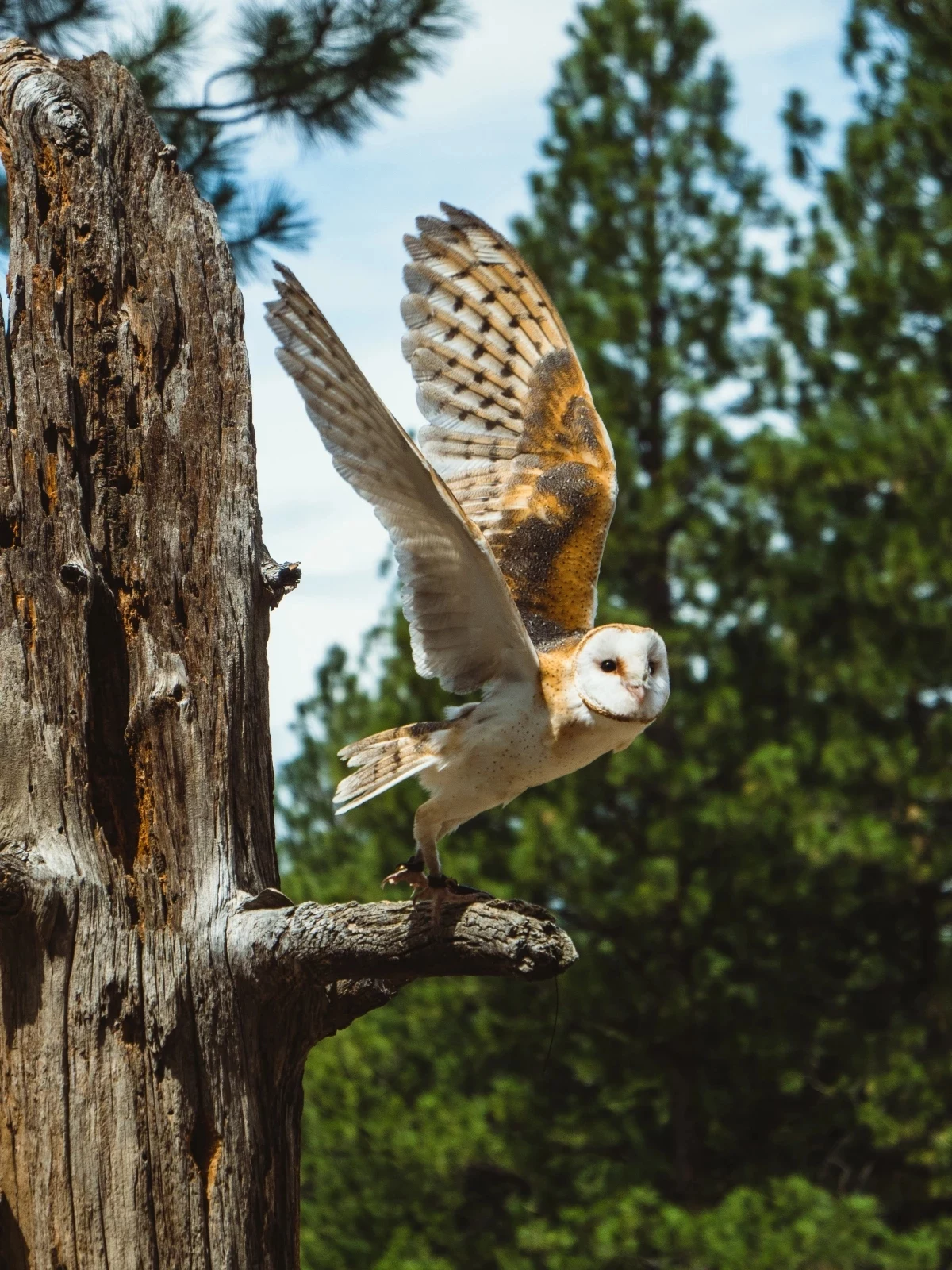
First, Think Like an Owl
Before you lift a single shovel, you have to get inside the head of the animal you’re hoping to host. Owls aren’t like songbirds that show up for a handful of seed. They’re specialized hunters, and their survival depends on very specific conditions. Ignoring this is the number one reason people fail.
The Magic of a Silent Hunter
An owl’s silence is its superpower. It’s all thanks to the unique design of their flight feathers. The front edge has a stiff fringe that breaks up airflow, kind of like the teeth on a comb, while the back edge is soft and flexible. The result? Near-total silence. This allows them to hear the faintest rustle of a mouse in the leaves and approach without a sound.
This also means they are incredibly sensitive to noise pollution. A constant hum from a highway or a neighbor’s loud pool pump can completely mask the sounds of prey, making an otherwise perfect yard a food-free zone for them.
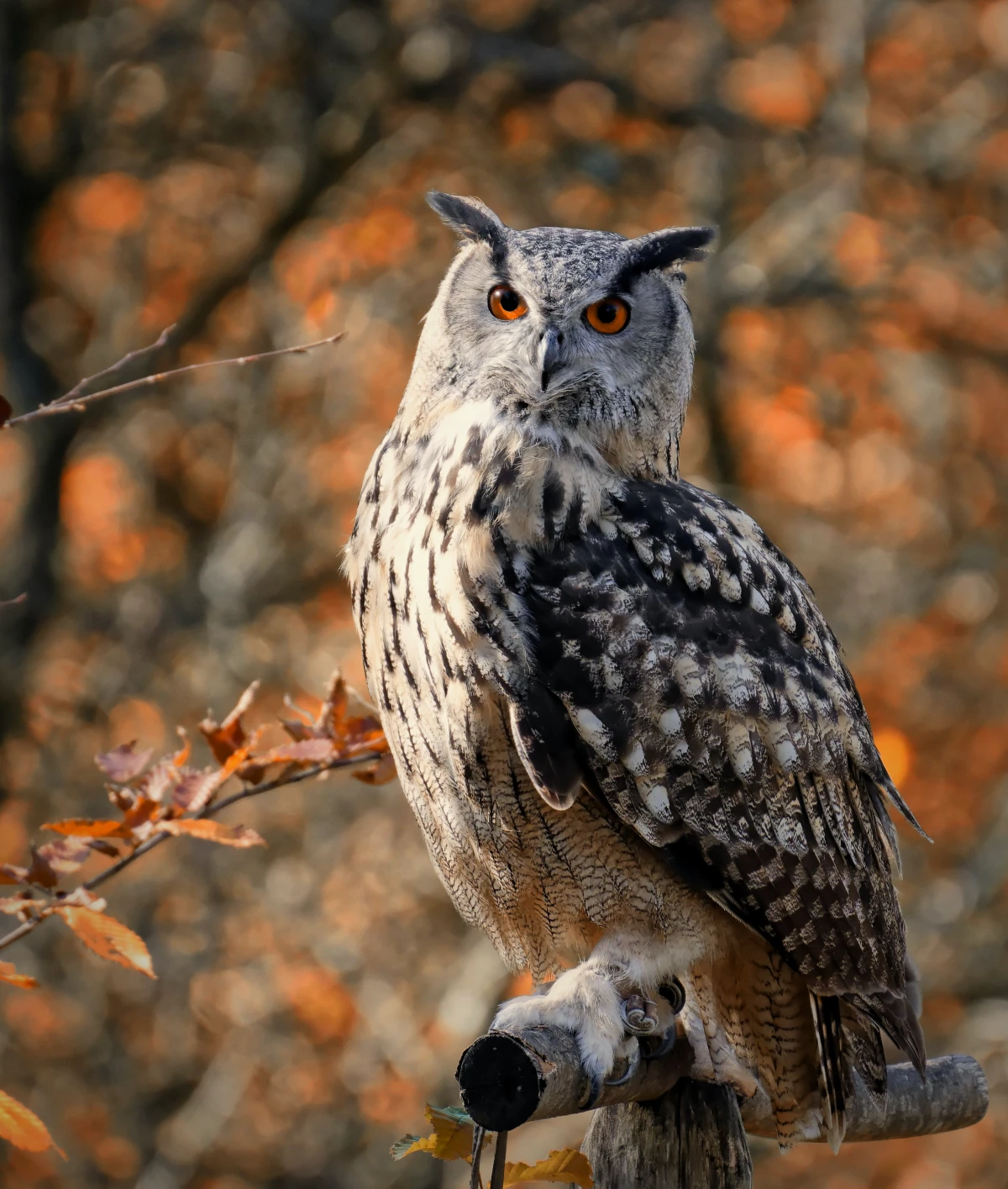
And their hearing? It’s on another level. Many owls have asymmetrical ears—one is slightly higher than the other. This tiny difference lets them triangulate sound with jaw-dropping precision, pinpointing a vole moving under a foot of snow. Their flat, feathered face acts like a satellite dish, funneling every tiny sound to those ears. Understanding this makes it clear why a quiet, natural space isn’t just a nice-to-have; it’s a must-have for an owl.
Who’s in Your Neighborhood?
“Owl” is a pretty broad term. The kind you might see depends entirely on where you live and what your property looks like. Before you do anything, figure out who your local residents are. Trying to attract a grassland-loving Barn Owl to a dense forest is just a waste of time.
Here are a few of the usual suspects in North America:
- Great Horned Owls: These are the big, tough guys of the owl world. They’re incredibly adaptable and live in forests, suburbs, and even city parks. They are powerful predators that can handle prey as large as rabbits.
- Barred Owls: A bit smaller than Great Horneds, these owls love mature, damp forests and swamps. They’re famous for their deep, booming call that sounds like, “Who cooks for you? Who cooks for you all?”.
- Screech-Owls (Eastern & Western): These little guys are small, stocky, and very common in wooded suburbs. They love nesting in cavities and are the most likely candidates to use a nest box. Their diet is mostly large insects and small rodents.
- Barn Owls: With their ghostly white, heart-shaped faces, they’re unmistakable. They need open country—think grasslands, farm fields, and meadows—for hunting. They’re a farmer’s best friend, eating huge numbers of rodents.
Quick Tip: Before you even start, do a little recon. Search online for owl calls on sites like the Cornell Lab of Ornithology’s Macaulay Library. Listen to them! You might realize you’ve been hearing a Screech-Owl trill for years without knowing it. Also, learn what an owl pellet looks like (a small, gray, fuzzy lump). Finding one under a big pine tree is a sure sign you’re already in owl territory.
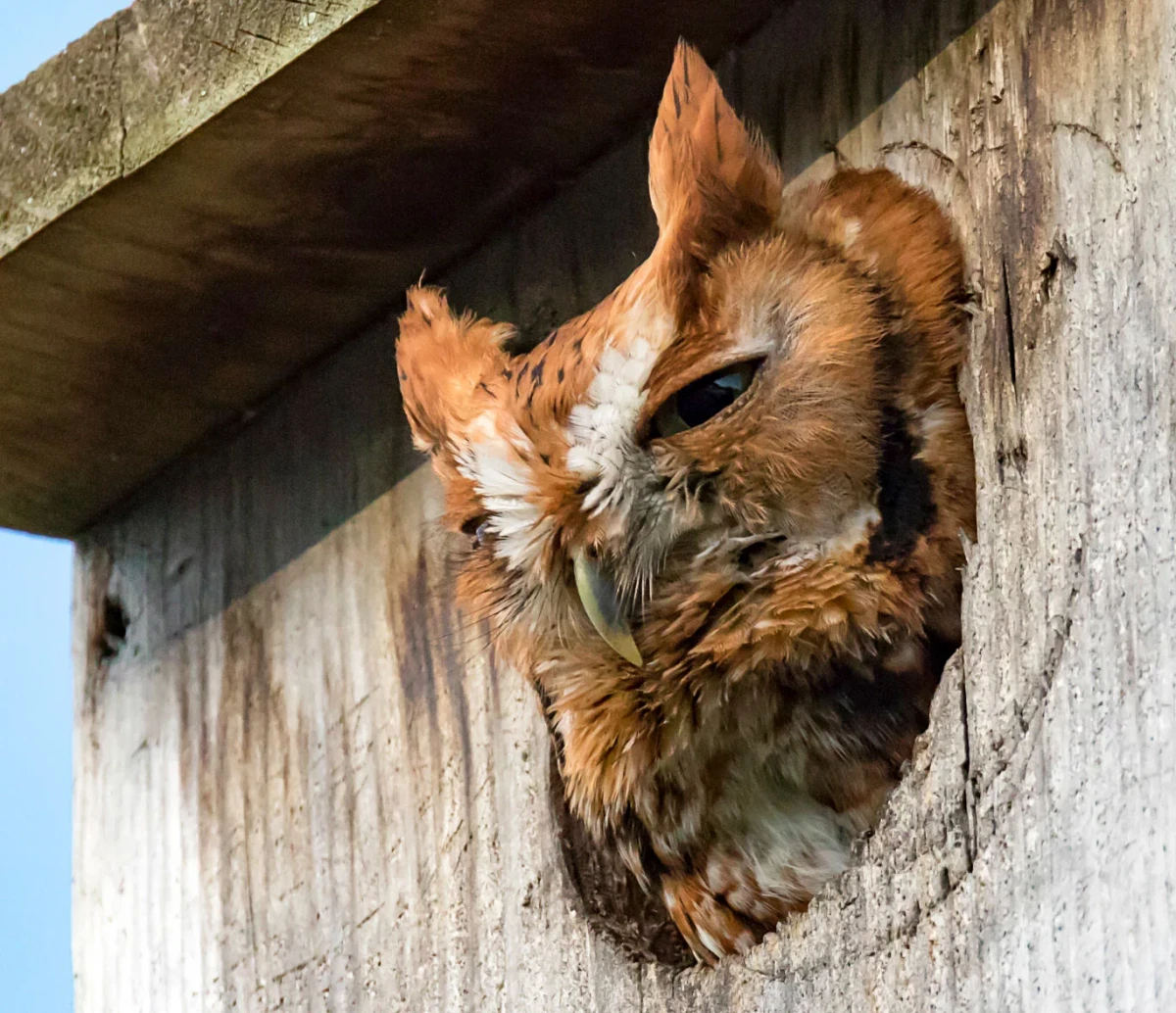
The Real Secret: Build the Buffet First
This is the most important part, so read it twice. You don’t attract owls. You attract what owls eat. A perfectly manicured lawn is a desert to an owl. Your number one goal is to create a home that supports a healthy population of small critters like voles, mice, and shrews.
Heads Up! The #1 Thing to AVOID
Before we go any further, we have to talk about poison. If you do one thing, please, make it this: NEVER use rodent poison baits. These products cause a slow, agonizing death by internal bleeding. A poisoned mouse doesn’t die right away; it becomes slow, clumsy, and the easiest meal an owl will ever find. The owl then ingests that poison, and it dies too. It’s called secondary poisoning, and it’s a completely preventable tragedy.
I’ve seen it firsthand, and it’s heartbreaking. If you have a serious rodent issue, call a pest control company that specializes in Integrated Pest Management (IPM). They’ll focus on sealing entry points and using snap traps, not poison. Make sure you tell them your goal is to protect local wildlife.
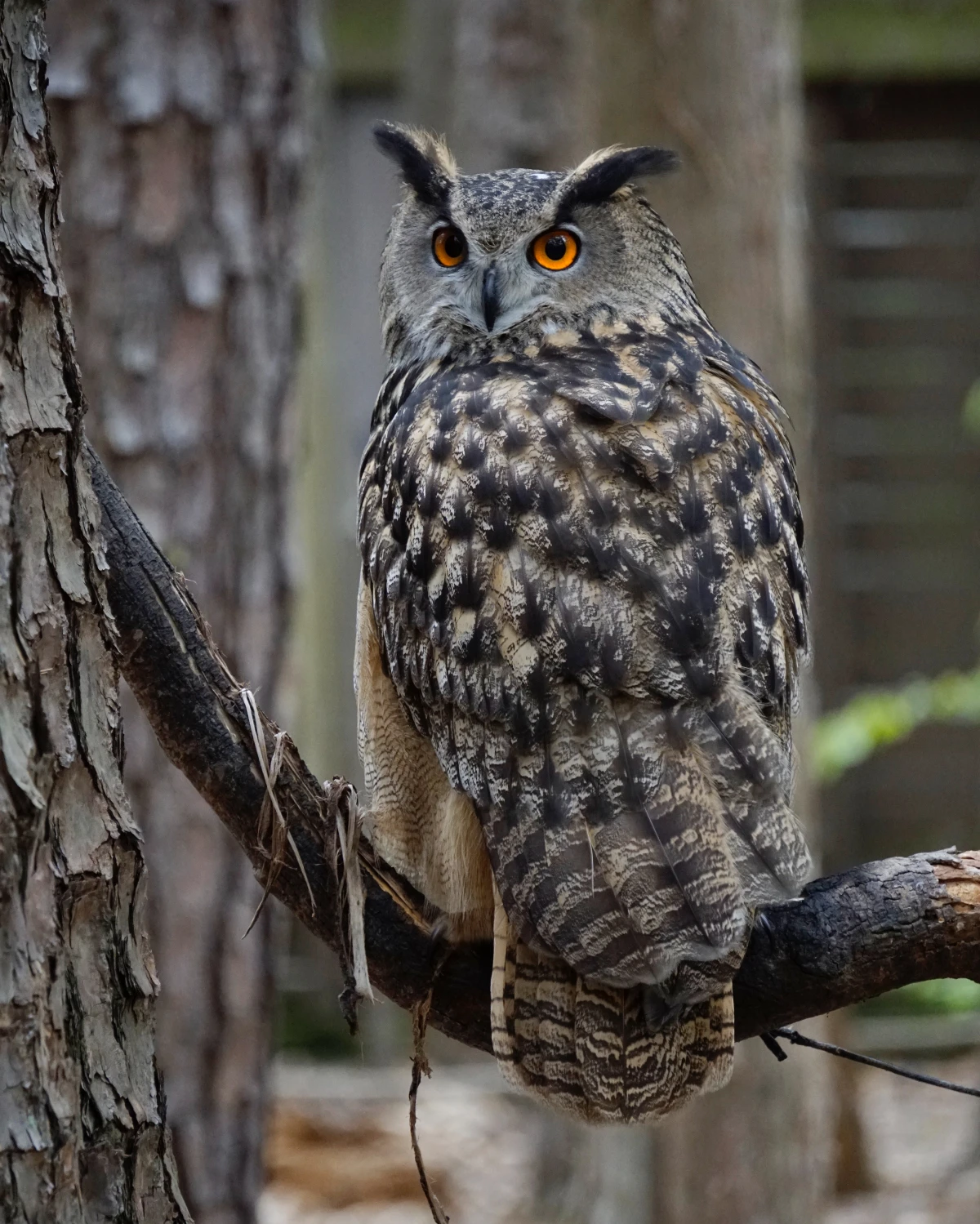
Okay, Let’s Build a Critter Paradise
- Build a Brush Pile: This is a five-star hotel for small mammals and a drive-thru for owls. Don’t just make a messy pile. Start with a base of larger logs (4-6 inches thick) to create little tunnels. Then layer smaller branches on top. A good pile is about 8 feet across and 4 feet high. Plan for an afternoon to put a good one together. It provides the perfect cover for the very animals an owl will hunt at night.
- Let Some Grass Grow: If you have the space, let a patch of your yard go wild. An unmowed area with native grasses is heaven for voles. Don’t have a huge yard? No problem. Even a 10×10 foot patch in a back corner can make a difference. Don’t let a small space stop you from helping the food web!
- Leave the Leaves: In the fall, resist the urge to rake everything bare. A layer of leaf litter in wooded spots is a crucial micro-habitat for the bugs and mice at the bottom of the food chain. It’s free food and shelter!
- Add Water: A simple, ground-level water source is fantastic. A standard bird bath is often too deep. Instead, grab a large ceramic saucer from a garden center (usually under $20) and fill it with an inch or two of water. Toss in a few stones so insects can climb out. Just be sure to change the water every couple of days to keep mosquitoes away.
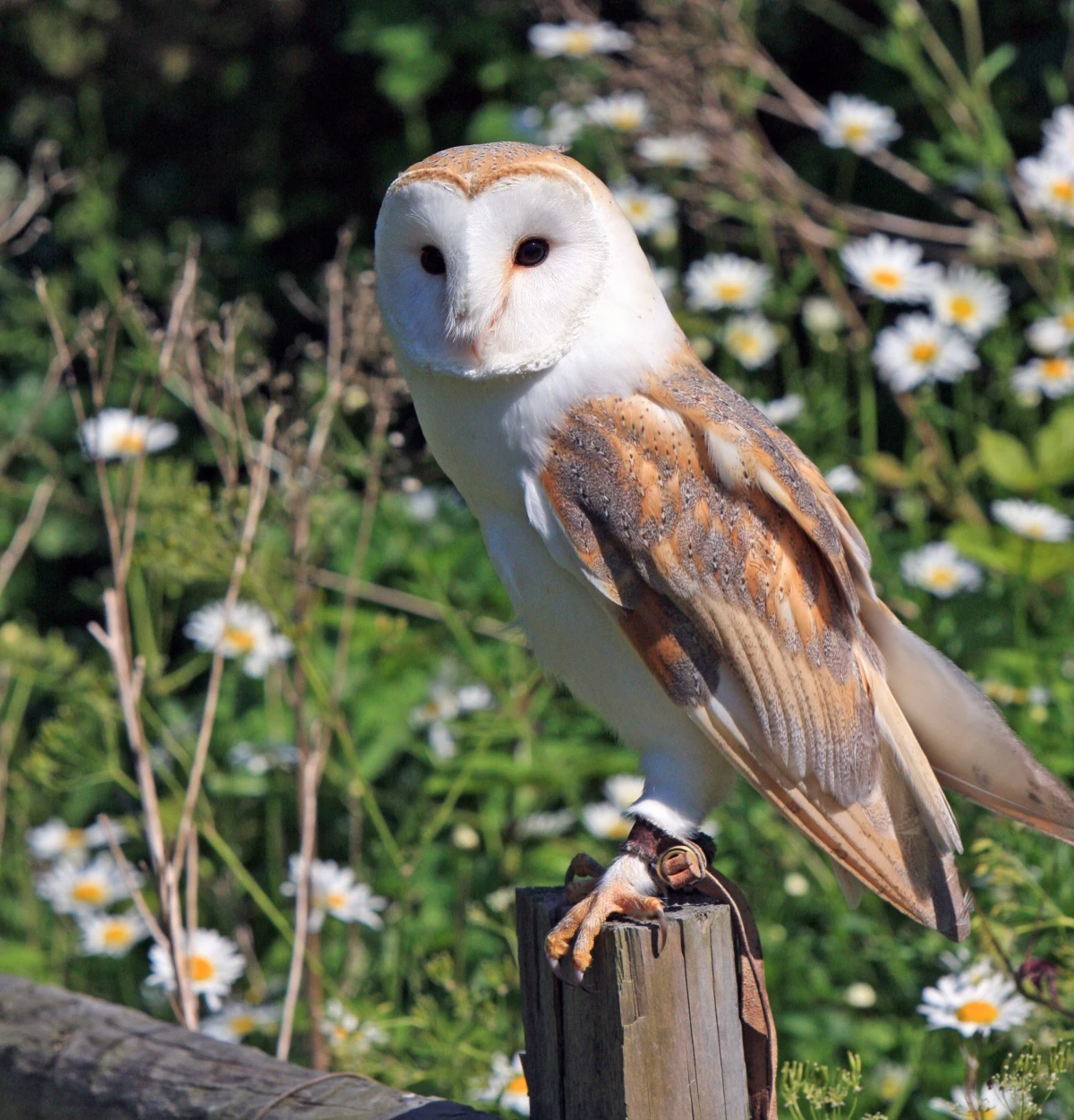
Next, Provide a Place to Hang Out
Once an owl decides your yard is a great restaurant, it needs a place to sit. An open yard with no tall trees is like a diner with no tables or chairs.
Hunting Perches
Owls are “perch and pounce” hunters. An ideal perch gives them a clear view of the hunting area you’ve created. A standing dead tree (a “snag”) is wildlife gold. If it’s not a safety hazard, leave it alone! If you don’t have one, you can make one. A sturdy 4×4 post, about 12-15 feet tall with a crossbeam at the top, works great. Sink it in concrete so it’s stable. It’ll cost you about $30-$50 in materials from a hardware store, and it’s a fantastic feature.
Daytime Roosting Spots
During the day, owls need to hide from crows and jays that will mob and harass them. They want dense cover. Thick evergreen trees like spruces, firs, or white pines are perfect. Planting a small cluster of these is a great long-term investment for all kinds of wildlife.
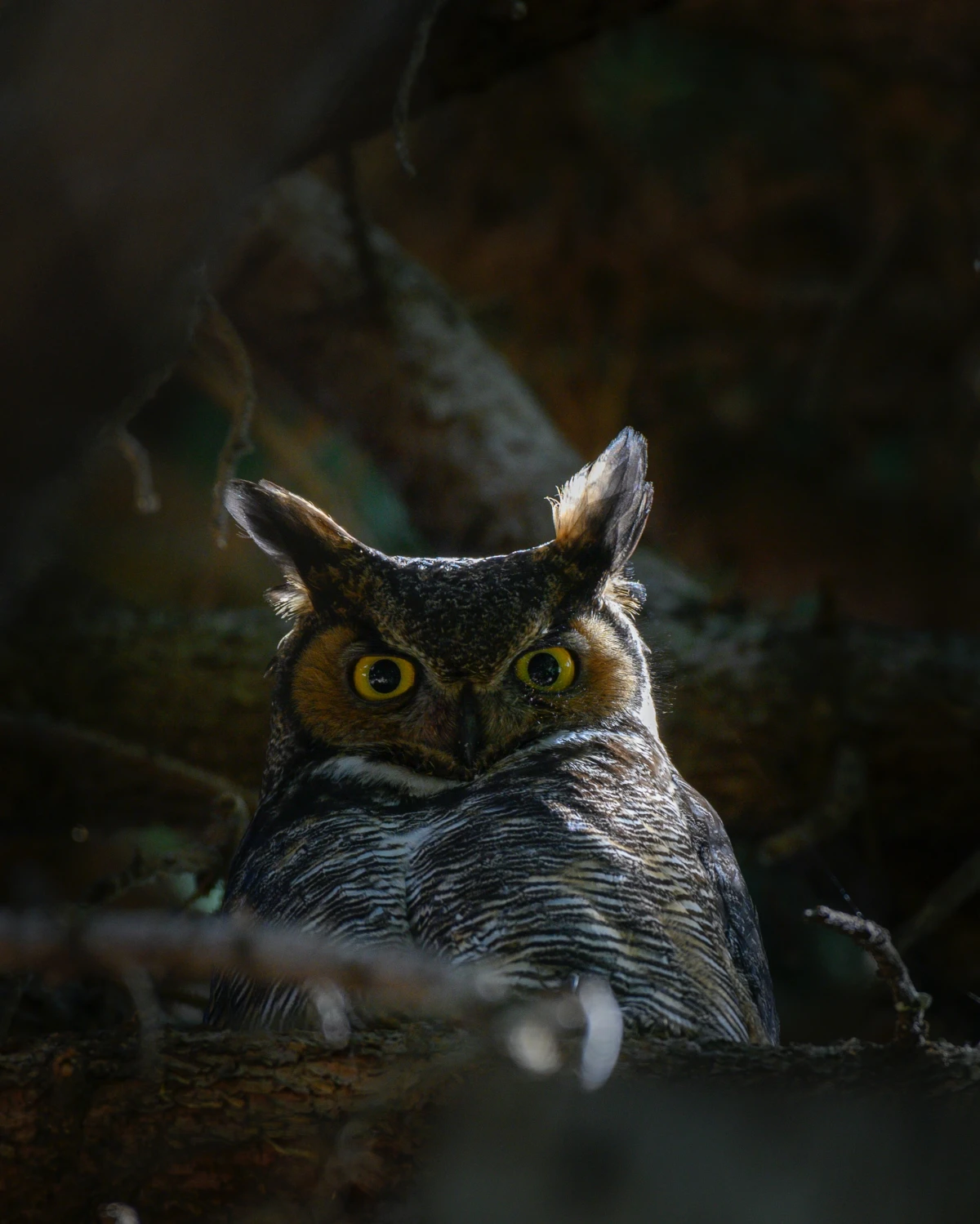
The Final Step: The Nest Box
Alright, this is the part everyone wants to jump to, but it should be your very last move. A nest box will not attract an owl to a bad habitat. It only gives an owl that’s already living and hunting nearby a place to raise a family.
Choosing the Right Box
One size does not fit all. A cheap, decorative “owl house” from a garden store is a waste of money. You need a box designed for the specific species you want to attract. You can find excellent free plans online from places like Audubon or state wildlife agencies.
A good pre-made Screech-Owl box from a reputable builder will run you about $50-$90, but you can build your own for under $40 in materials. Look for designs made from untreated wood (like pine or cedar) with proper drainage holes and a rough interior wall so the babies can climb out.
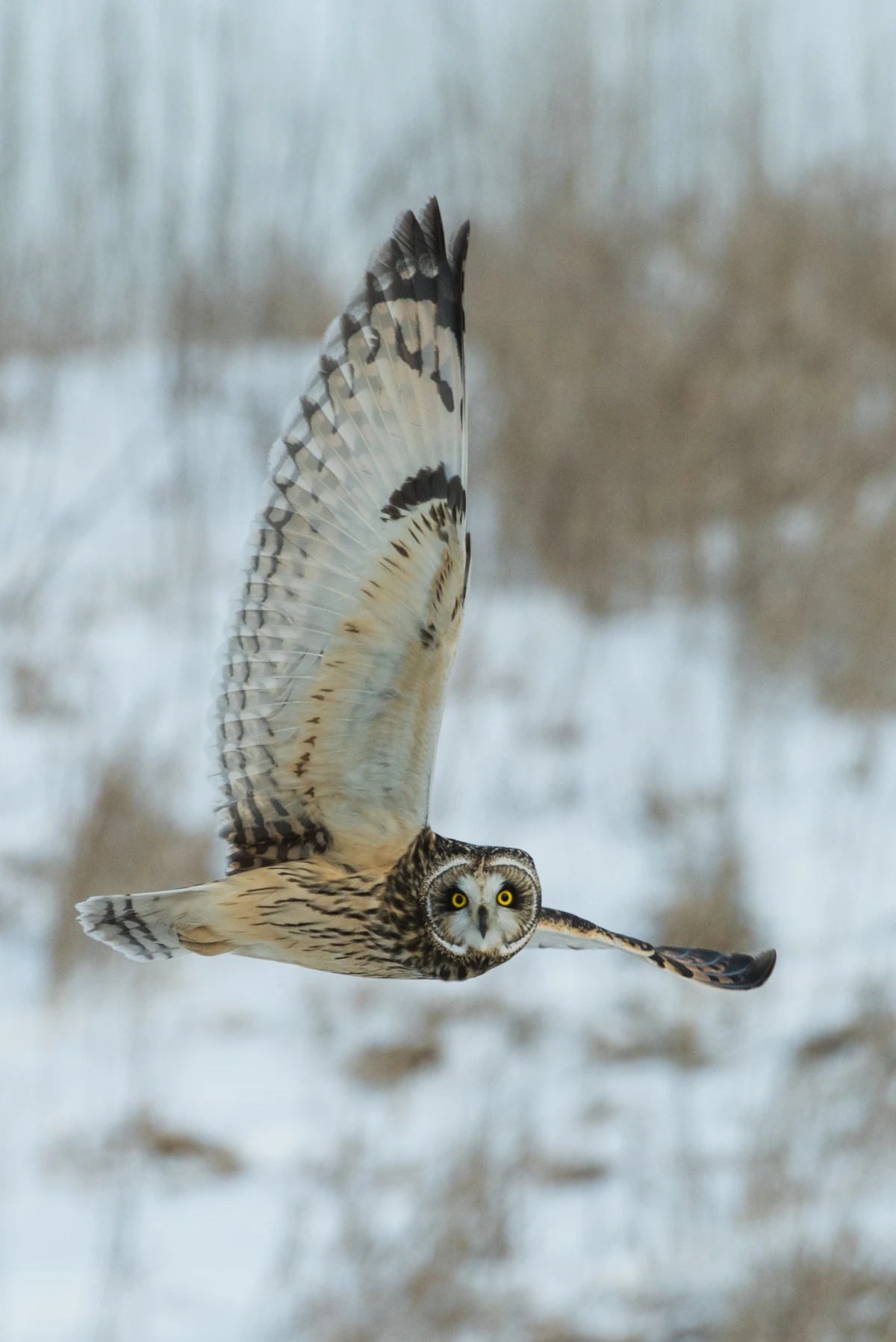
Placement is Everything
This is where most people mess up. I once put up a perfect Screech-Owl box and it sat empty for two years. I moved it 100 yards to a quieter tree, and a pair moved in the next spring. Here’s what I learned:
- Height: 10-30 feet high for smaller owls like Screech-Owls.
- Location: On a mature, living tree, preferably at the edge of a wooded area facing an open space.
- Orientation: Face the entrance away from prevailing winds (usually south or east).
- Clear Flight Path: Make sure there’s a clear shot to the entrance.
- Quiet Zone: This is critical. Don’t put it near your deck, driveway, or kids’ play area.
Good to know: Try to get your box installed by late winter (think January or February), well before breeding season kicks off. But honestly, any time is better than never. And before you hang it, toss a 2-3 inch layer of wood shavings (not sawdust!) in the bottom for bedding. Then, be patient. It can take years for a box to get noticed.
Common Problems & What to Do
So, what happens when things don’t go according to plan? Here are a few common hiccups.
- “A squirrel moved into my owl box!” Yep, this is super common. Once the squirrel’s babies are gone, you can clean the box out. To prevent it from happening again, you can install a metal squirrel guard on the tree trunk below the box.
- “My HOA/neighbors think my yard looks messy.” The key is communication and strategic placement. Keep the front yard tidy and let the back corner be your “wild” zone. Sometimes, just explaining that your brush pile is a designated “wildlife habitat” can make a world of difference. A small, nice-looking sign can even help.
- “I’ve done everything and still no owls.” Patience is a virtue here. But while you wait, look for other signs of success! Are you seeing more songbirds? Are there chipmunks using your brush pile? You’ve still created a healthier ecosystem, and that is a huge win in itself.
Being a Good Wildlife Neighbor
Creating the habitat is half the battle; the other half is minimizing your own impact.
Kill the Lights
Bright, all-night security lights are a huge problem for nocturnal animals. They shrink an owl’s hunting territory and mess with their patterns.
Quickest Win: The easiest and most immediate thing you can do is switch your outdoor lights to motion sensors. If you must have a light on, use a fixture that aims the light down (not out or up) and choose a bulb with a warmer, amber tone (under 3000K). You can do this tonight and instantly make your yard more wildlife-friendly.
A Note on Pets
This is a tough but essential topic. A Great Horned Owl is a powerful predator and can absolutely view a small cat or toy-breed dog as prey. The only responsible choice is to keep small pets indoors, especially from dusk until dawn.
But the reverse is also true. A free-roaming outdoor cat is a highly effective hunter that can wipe out the very mice, shrews, and birds you’re trying to support for the owls. To truly create a sanctuary, you have to manage the impact of your own animals, too.
If You Find an Injured Owl
Do not try to handle it. Even a small owl can cause serious injury with its talons. Your presence is also incredibly stressful for the bird. Your first step should be to contact a licensed wildlife rehabilitator or your state’s wildlife agency. A quick search for “Animal Help Now” online can connect you with local experts who are trained and legally permitted to help.
By the way, all native owls are federally protected. It’s illegal to harm them or even possess their feathers. If you find a beautiful feather, take a picture and leave it be.
Building an owl habitat is a journey. It requires you to see your yard as a small piece of a much bigger world. You might spend a season building a brush pile and a year watching an empty box. But in the process, you’ll have created a healthier, more vibrant space for countless creatures. And one evening, when you finally see that silent shadow glide across your yard… you’ll know it was all worth it.
Inspirational Gallery
An owl’s menu is the foundation of its habitat. Before you even think about nesting, consider what you’re serving. To cultivate a healthy population of voles, shrews, and mice, let a section of your lawn grow a bit longer. A pristine, golf-course-perfect lawn is a food desert for an owl. This ‘wild’ patch provides the cover small mammals need to thrive, creating a reliable, 24/7 buffet for a hungry hunter.
A single Barn Owl family can consume over 1,000 rodents during a single nesting season.
This incredible statistic from the Audubon Society highlights why owls are one of nature’s most effective forms of pest control. By creating an owl-friendly environment, you’re not just welcoming a beautiful bird; you’re recruiting a highly efficient, all-natural rodent management team for your property, reducing the need for chemical interventions.
Do owls need a bird bath?
Absolutely, but not just for drinking. Owls often get sufficient moisture from their prey, but they need to bathe to keep their specialized feathers in prime condition for silent flight. Forget deep, steep-sided decorative bowls. Opt for a low, wide ground-level basin, like the models from Allied Precision, which can even be heated for crucial winter-preening. Place it in a quiet, semi-sheltered spot to make them feel secure.
- Provides critical shelter for small mammals and insects.
- Offers a safe hiding place for fledgling owls on the ground.
- Decomposes slowly, enriching your soil with organic matter.
The secret? A simple brush pile. Instead of bagging up fallen branches and storm debris, find an unused corner of your yard and start a pile. It’s the easiest, cheapest, and most effective way to kickstart your backyard ecosystem.
Important point: The single greatest threat to owls in suburban areas is rodenticide. When you use poison baits for mice or rats, you’re not just killing the rodent. Owls who prey on these weakened animals suffer from secondary poisoning, a slow and fatal condition. A far safer alternative is using a classic snap trap inside a secure, pet-proof bait station like those from Tomcat, ensuring only the target pest is affected.
Eastern Screech-Owl: A small, compact owl that often lives undetected in suburban yards. They need pre-existing cavities for nesting, so mature trees with old woodpecker holes are a must. They primarily eat large insects, amphibians, and small rodents.
Great Horned Owl: A large, powerful apex predator. They prefer sturdy, open nests and will often take over old hawk or crow nests. They require large, mature trees for perching and a hunting ground with larger prey like rabbits and squirrels.
Knowing your local species helps you tailor your habitat for the most likely resident.
Owls’ eyes are not true ‘eyeballs.’ Their tube-shaped eyes are completely fixed in their sockets, providing binocular vision that locks on to prey and enhances depth perception.
This is why they can’t simply glance sideways. Instead, they rely on an incredible skeletal adaptation: 14 neck vertebrae (twice as many as humans!) that allow them to swivel their heads a full 270 degrees. This provides a panoramic view without ever moving their body, making them masters of the patient, silent stakeout from a high perch.
Forget bright white security floodlights. Owls hunt best in low light, and sudden, intense illumination can temporarily blind them and scare off their prey. If you need outdoor lighting for pathways, switch to low-wattage, downward-facing fixtures. Amber or red-hued smart bulbs, like those in the Philips Hue Outdoor range, are a great option as their wavelengths are far less disruptive to the nocturnal world.
Think of trees as the architecture of an owl’s world. They aren’t just perches; they are observation towers, shelters, and nurseries.
- Mature Conifers: Trees like White Pines or Norway Spruces offer dense needles that provide essential year-round cover from weather and daytime predators (like crows).
- Old Deciduous Trees: An aging oak or maple with natural hollows or old woodpecker holes is a 5-star nesting site for smaller cavity-nesters like Screech Owls.
If an old tree must come down for safety reasons, consider asking the arborist to leave a 10- to 15-foot standing stump. This ‘snag’ is an instant wildlife magnet, providing a hunting perch for owls and a home for the very insects and small mammals they feed on. It’s recycling, reimagined for the ecosystem.










